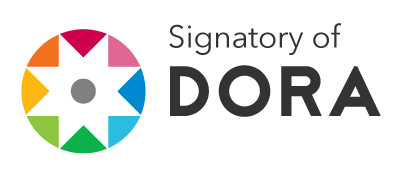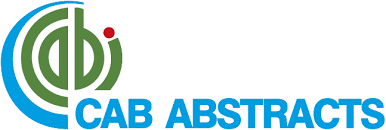The Ratio of Sunflower Pollens Foraged by Apis mellifera Is More Than That of Apis cerana Does During Sunflower Blooming
DOI:
https://doi.org/10.13102/sociobiology.v67i2.4408Keywords:
pollination, foraging behaviorAbstract
Bias foraging of pollen is general in different pollinators since various nutrition demanding, co-evolution and interaction of insect-plant. To clarify the preference of pollen foraging during sunflower blooming, the pollen foraging behaviors of Apis mellifera Linnaeus and Apis cerana Fabricius were observed. Our results displayed that two summits of pollen foraging occurred in the morning before the ambient temperature climbed up to thirty-one degree centigrade and in the afternoon after the ambient temperature decreased below thirty-one degree centigrade, respectively. Notably, the first foraging summit of Apis cerana emerged one hour earlier than that of Apis mellifera. These results imply that Apis mellifera is less resistant to low temperature but more resistant to high temperature than Apis cerana does. The colonies were surrounded by sunflowers with sporadic weeds, while only few maize dispersed over two hundred meters away. However, no more than forty percent of total pollens foraged by Apis mellifera was from sunflower, and which was no more than twenty percent in Apis cerana group. These results suggest that sunflower pollens are not the prior choice for both honey bee species, while the ratio of sunflower pollens foraged by Apis mellifera is more than that of Apis cerana does.Downloads
References
Aleixo, K. P., Menezes, C., Imperatriz Fonseca, V. L. &da Silva, C. I. (2017). "Seasonal availability of floral resources and ambient temperature shape stingless bee foraging behavior (Scaptotrigona aff. depilis)." Apidologie, 48: 117-127.doi: 10.1007/s13592-016-0456-4.
Brodschneider, R. &Crailsheim, K. (2010). "Nutrition and health in honey bees." Apidologie, 41: 278-294.doi: 10.1051/apido/2010012.
Brown, M. J. F. &Paxton, R. J. (2009). "The conservation of bees: a global perspective." Apidologie, 40: 410-416.doi: 10.1051/apido/2009019.
Calderone, N. W. (2012). "Insect pollinated crops, insect pollinators and US agriculture: trend analysis of aggregate data for the period 1992–2009." PLoS ONE, 7: e37235.doi: 10.1371/journal.pone.0037235.
Chen, C., Liu, Z., Luo, Y., Xu, Z., Wang, S., Zhang, X., Dai, R., Gao, J., Chen, X., Guo, H., Wang, H., Tang, J. &Shi, W. (2017). "Managed honeybee colony losses of the Eastern honeybee (Apis cerana) in China (2011–2014)." Apidologie, 48: 692-702.doi: 10.1007/s13592-017-0514-6.
Couvillon, M. J., Riddell Pearce, F. C., Accleton, C., Fensome, K. A., Quah, S. K. L., Taylor, E. L. &Ratnieks, F. L. W. (2015). "Honey bee foraging distance depends on month and forage type." Apidologie, 46: 61-70.doi: 10.1007/s13592-014-0302-5.
Danner, N., Molitor, A. M., Schiele, S., Härtel, S. &Steffan-Dewenter, I. (2016). "Season and landscape composition affect pollen foraging distances and habitat use of honey bees." Ecological Applications, 26: 1920-1929.doi: 10.1890/15-1840.1.
Di Pasquale, G., Alaux, C., Le Conte, Y., Odoux, J.-F., Pioz, M., Vaissière, B. E., Belzunces, L. P. &Decourtye, A. (2016). "Variations in the availability of pollen resources affect honey bee health." PLoS ONE, 11: e0162818.doi: 10.1371/journal.pone.0162818.
Filipiak, M., Kuszewska, K., Asselman, M., Denisow, B., Stawiarz, E., Woyciechowski, M. &Weiner, J. (2017). "Ecological stoichiometry of the honeybee: Pollen diversity and adequate species composition are needed to mitigate limitations imposed on the growth and development of bees by pollen quality." PLoS ONE, 12: e0183236.doi: 10.1371/journal.pone.0183236.
Greenleaf, S. S. &Kremen, C. (2006). "Wild bees enhance honey bees’ pollination of hybrid sunflower." Proceedings of the National Academy of Sciences, 103: 13890-13895.doi: 10.1073/pnas.0600929103.
Hendriksma, H. P. &Shafir, S. (2016). "Honey bee foragers balance colony nutritional deficiencies." Behavioral Ecology and Sociobiology, 70: 509-517.doi: 10.1007/s00265-016-2067-5.
Koski, M. H. &Ashman, T.-L. (2015). "An altitudinal cline in UV floral pattern corresponds with a behavioral change of a generalist pollinator assemblage." Ecology, 96: 3343-3353.doi: 10.1890/15-0242.1.
Leonhardt, S. D. &Blüthgen, N. (2012). "The same, but different: pollen foraging in honeybee and bumblebee colonies." Apidologie, 43: 449-464.doi: 10.1007/s13592-011-0112-y.
Naug, D. (2009). "Nutritional stress due to habitat loss may explain recent honeybee colony collapses." Biological Conservation, 142: 2369-2372.doi: doi.org/10.1016/j.biocon.2009.04.007.
Nicolson, S. W. &Human, H. (2013). "Chemical composition of the ‘low quality’ pollen of sunflower (Helianthus annuus, Asteraceae)." Apidologie, 44: 144-152.doi: 10.1007/s13592-012-0166-5.
Orban, L. L. &Plowright, C. M. (2014). "Getting to the start line: how bumblebees and honeybees are visually guided towards their first floral contact." Insectes Sociaux, 61: 325-336.doi: 10.1007/s00040-014-0366-2.
Park, D., Jung, J. W., Choi, B.-S., Jayakodi, M., Lee, J., Lim, J., Yu, Y., Choi, Y.-S., Lee, M.-L., Park, Y., Choi, I.-Y., Yang, T.-J., Edwards, O. R., Nah, G. &Kwon, H. W. (2015). "Uncovering the novel characteristics of Asian honey bee, Apis cerana, by whole genome sequencing." BMC Genomics, 16: 1.doi: 10.1186/1471-2164-16-1.
Tan, K., Yang, S., Wang, Z.-W., Radloff, S. E. &Oldroyd, B. P. (2012). "Differences in foraging and broodnest temperature in the honey bees Apis cerana and A. mellifera." Apidologie, 43: 618-623.doi: 10.1007/s13592-012-0136-y.
Vaudo, A. D., Tooker, J. F., Grozinger, C. M. &Patch, H. M. (2015). "Bee nutrition and floral resource restoration." Current opinion in insect science, 10: 133-141.doi: 10.1016/j.cois.2015.05.008.
Downloads
Published
How to Cite
Issue
Section
License
Sociobiology is a diamond open access journal which means that all content is freely available without charge to the user or his/her institution. Users are allowed to read, download, copy, distribute, print, search, or link to the full texts of the articles in this journal without asking prior permission from the publisher or the author. This is in accordance with the BOAI definition of open access.
Authors who publish with this journal agree to the following terms:
- Authors retain copyright and grant the journal right of first publication with the work simultaneously licensed under a Creative Commons Attribution License that allows others to share the work with an acknowledgement of the work's authorship and initial publication in this journal.
- Authors are able to enter into separate, additional contractual arrangements for the non-exclusive distribution of the journal's published version of the work (e.g., post it to an institutional repository or publish it in a book), with an acknowledgement of its initial publication in this journal.
- Authors are permitted and encouraged to post their work online (e.g., in institutional repositories or on their website) prior to and during the submission process, as it can lead to productive exchanges, as well as earlier and greater citation of published work (See The Effect of Open Access).



 eISSN 2447-8067
eISSN 2447-8067










